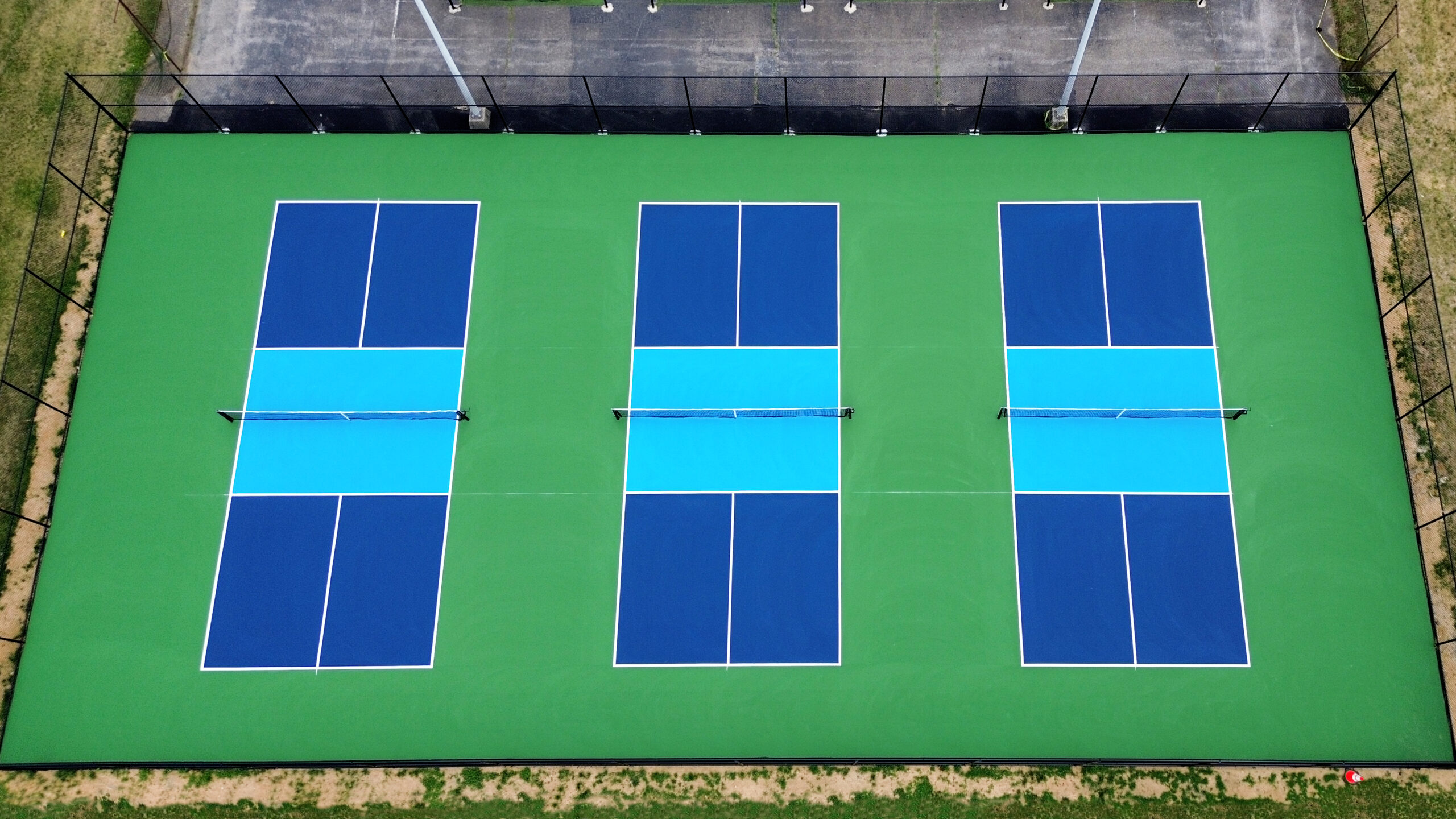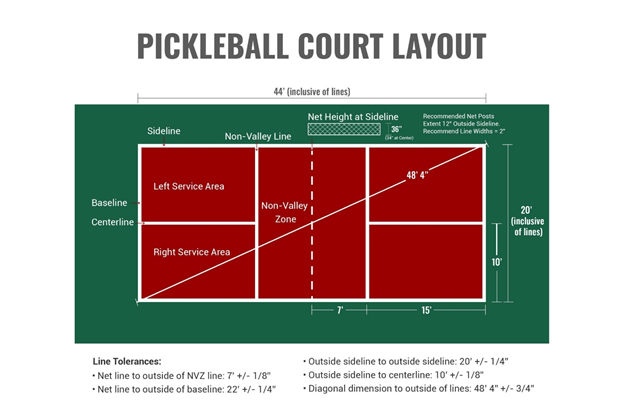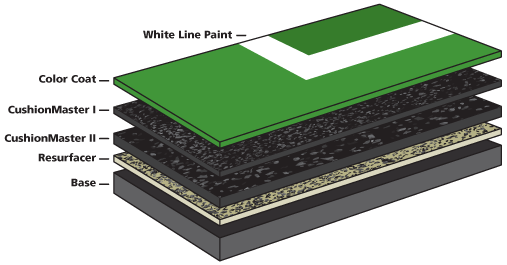Building a Pickleball Court Construction-- Specialist Construction for High Quality Play
Building a Pickleball Court Construction-- Specialist Construction for High Quality Play
Blog Article
Sustainable Practices in Pickleball Court Building And Construction You Ought To Know
As the appeal of pickleball continues to increase, so as well does the requirement for sustainable methods in court building. This technique not only addresses environmental concerns but additionally improves the durability and functionality of the courts. From selecting environmentally friendly materials to applying reliable drain and energy-saving lighting remedies, there are many methods to take into consideration. Yet, the influence of these methods extends much beyond the court itself. Understanding just how each element adds to an extra sustainable future welcomes further expedition into the intricate balance between recreational growth and ecological stewardship.
Selecting Eco-Friendly Products
Picking eco-friendly materials is an essential step in the building of lasting pickleball courts. The option of sustainable products not just reduces environmental influence yet also boosts the longevity and performance of the court. Key materials include recycled rubber for the surface, which offers outstanding durability and shock absorption while diverting waste from land fills.
In addition, using in your area sourced products decreases transportation emissions and sustains local economic situations. Pickleball court construction. As an example, utilizing native woods for secure fencing and seating can offer a sustainable visual while ensuring resilience against the components.
Incorporating absorptive products for court foundations can better add to sustainability by permitting natural water drain and reducing drainage. These choices not just protect regional environments but also advertise healthier play atmospheres.
Efficient Drain Solutions
While the option of environment-friendly products is crucial, executing effective drainage services is similarly essential for maintaining sustainable pickleball courts. Appropriate drain not just shields the court surface from water damage yet additionally minimizes disintegration and drainage, promoting ecological honesty.
Reliable water drainage systems can consist of absorptive paving, which enables water to penetrate the ground instead of merging externally. This minimizes the possibility of standing water, which can result in mold and mildew and various other upkeep concerns. In addition, including purposefully placed drainage networks and swales can guide excess water away from the court area, ensuring a completely dry having fun surface area and stopping soil erosion.
Making use of indigenous plant life in the landscape design around the courts can even more enhance water drainage by taking in excess water and reducing overflow. These plants require much less irrigation and advertise biodiversity, lining up with sustainable practices.
Moreover, it is critical to on a regular basis maintain the drainage system to guarantee its long-term effectiveness. This consists of clearing debris and surveillance for obstructions. By focusing on effective drainage services, pickleball court builders can substantially add to the sustainability and longevity of the facility, inevitably benefiting both players and the atmosphere.
Energy-Efficient Lights Options
As the demand for pickleball proceeds to expand, integrating energy-efficient illumination alternatives right into court design has actually become increasingly crucial for sustainability. Traditional lighting systems typically take in too much power, adding to higher operational costs and ecological impact. Embracing contemporary, energy-efficient modern technologies is essential for both brand-new building and constructions and restorations.
LED (Light Emitting Diode) lights attracts attention as a top selection as a result of its long life and power savings (Pickleball court construction). Contrasted to standard lighting, LEDs make use of around 75% much less energy and can last approximately 25 times much longer, considerably decreasing upkeep costs. Additionally, the directional nature of LED lights lessens light contamination, ensuring that lighting is focused on the court instead than bordering areas.

Sustainable Surface Alternatives
Discovering lasting surface area alternatives for pickleball courts has obtained grip amongst players and home builders alike. The focus check out here on green products not just aligns with the growing environmental awareness however likewise improves the performance and toughness of the courts.
One preferred choice is the usage of recycled rubber, which can be sourced from used tires. This product gives superb shock absorption, minimizing the threat of injuries for gamers while advertising sustainability. Furthermore, modular ceramic tiles made from recycled plastics provide another sensible alternative. These ceramic tiles are simple to replace and install, and their convenience enables numerous court setups.
Natural yard courts are also emerging as a lasting selection, promoting biodiversity and decreasing the warmth island result. However, they need regular maintenance and water, which may not line up with all sustainability objectives.

Water Preservation Methods

An additional efficient strategy includes the installment of rain harvesting systems. These systems keep and collect rain for usage in maintaining court surface areas and landscaping. This technique not only saves link potable water however also reduces dependence on community resources.
Moreover, utilizing drought-resistant landscape design around the courts is vital. Indigenous plants call for less water and are much better adjusted to regional environment conditions, thus Learn More reducing total water consumption. Additionally, using reliable watering systems, such as drip watering, ensures that water is provided directly to plant origins, decreasing evaporation and waste.
Verdict
Integrating lasting methods in pickleball court construction substantially contributes to ecological preservation and source efficiency. By prioritizing these techniques, the construction of pickleball courts can straighten with broader environmental objectives while promoting longevity and performance within neighborhoods.
As the appeal of pickleball proceeds to increase, so also does the need for sustainable methods in court building and construction.Choosing environmentally friendly materials is a crucial action in the construction of lasting pickleball courts. By focusing on energy-efficient lights options, pickleball court builders can add to an extra lasting future while satisfying the requirements of players and stakeholders alike.Incorporating lasting surface alternatives not just boosts the efficiency of pickleball courts but also leads the method for executing effective water conservation techniques.Including lasting methods in pickleball court building significantly adds to environmental conservation and source effectiveness.
Report this page